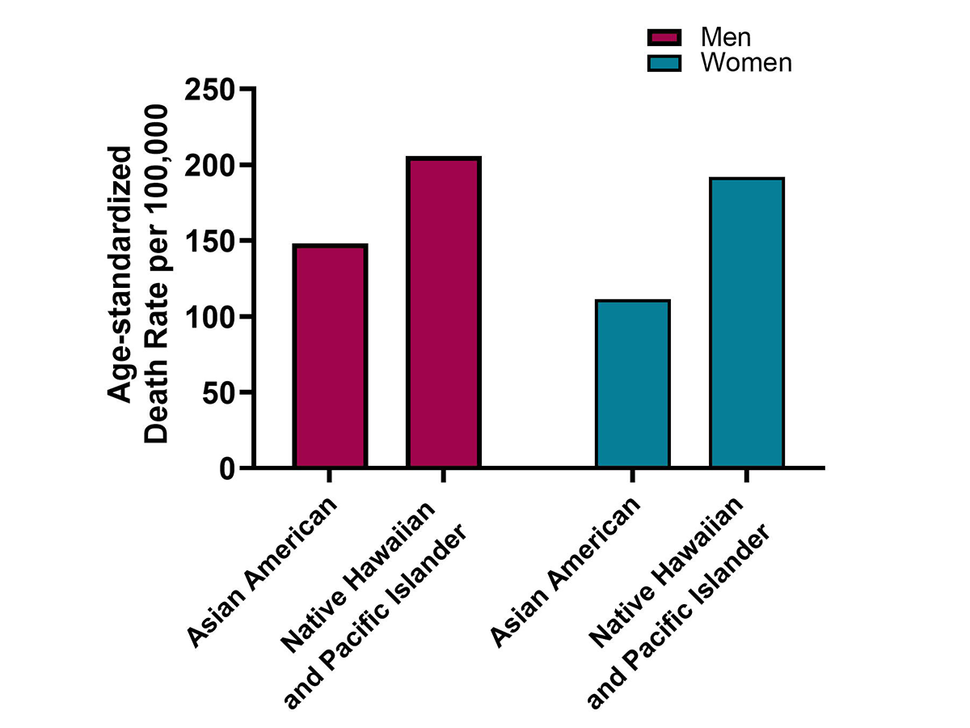Disparities in Mortality Rates Revealed by Disaggregating Data on Asian American and Native Hawaiian and Pacific Islander Individuals
, by Elise Tookmanian, Ph.D.
Asian American (AA) and Native Hawaiian and Pacific Islander (NHPI) populations are often treated as if they are one racial group, despite representing different ethnogeographic regions. A new study conducted by investigators in the Infections and Immunoepidemiology Branch (IIB) and Radiation Epidemiology Branch (REB) analyzed cancer death rates across racial/ethnic groups, revealing that the historical aggregation of NHPI and AA populations has masked substantial health disparities for decades. The findings were published in the Journal of National Cancer Institute on April 19, 2023.
In 2018, the National Center for Health Statistics (NCHS) implemented a change to the classification of race/ethnicity on U.S. death certificate data, allowing for the separate reporting of race for NHPI individuals. This important update enabled Anika T. Haque, M.P.H., scientific program analyst, and Meredith Shiels, Ph.D., M.H.S., senior investigator in IIB, to estimate cancer death rates across these updated racial/ethnic categories, sex, age, and cancer type. Their analysis revealed that compared to AA individuals, overall cancer death rates were 39 percent higher in NHPI men and 73 percent higher in NHPI women. Since the AA population is much larger than the NHPI population, these differences were masked when the two groups were combined, reinforcing the importance of disaggregating these groups in medical research.
The authors note some limitations to their study. Race reported on death certificates is usually reliable, since it is based on information provided by the closest living relative. However, when a next-of-kin is not available, the race assignment is made by a funeral director based on observation, which may result in racial misclassification. In addition, since the new racial/ethnic classification was implemented in 2018, they could not examine trends over time. As seen in other work, there can be health disparities within each racial/ethnic group, so the authors emphasize the need for more granular ethnic disaggregation in cancer health statistics.
Reference
Haque AT, et al. Cancer mortality rates by racial/ethnic groups in the United States, 2018-2020. J Natl Cancer Inst. 2023.
